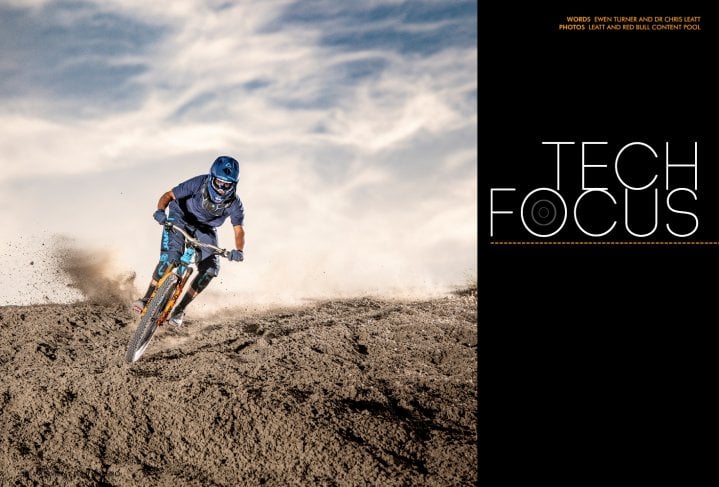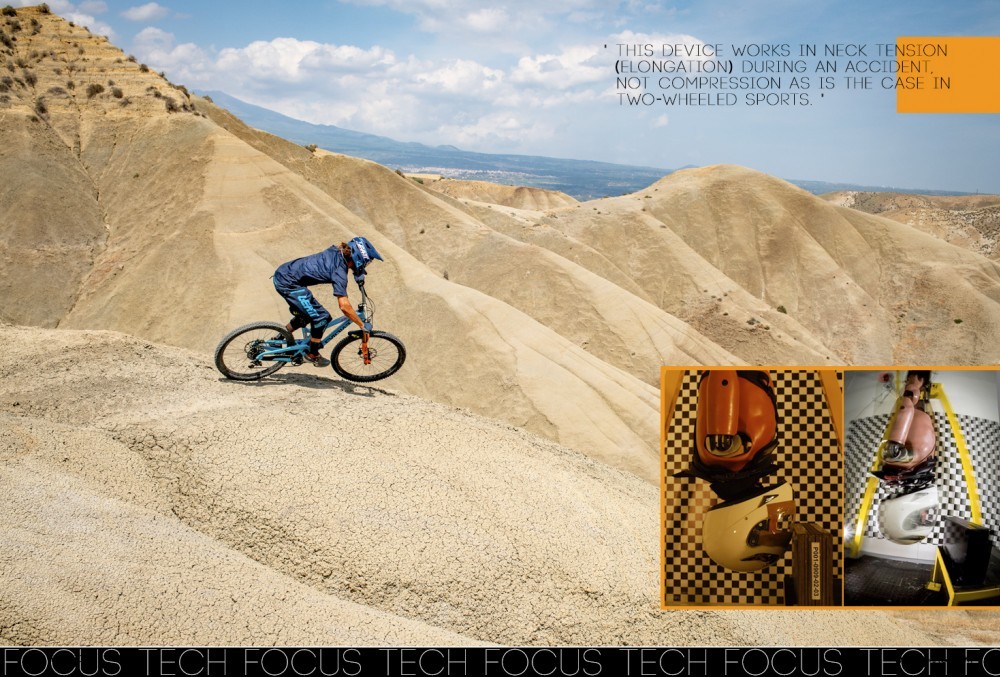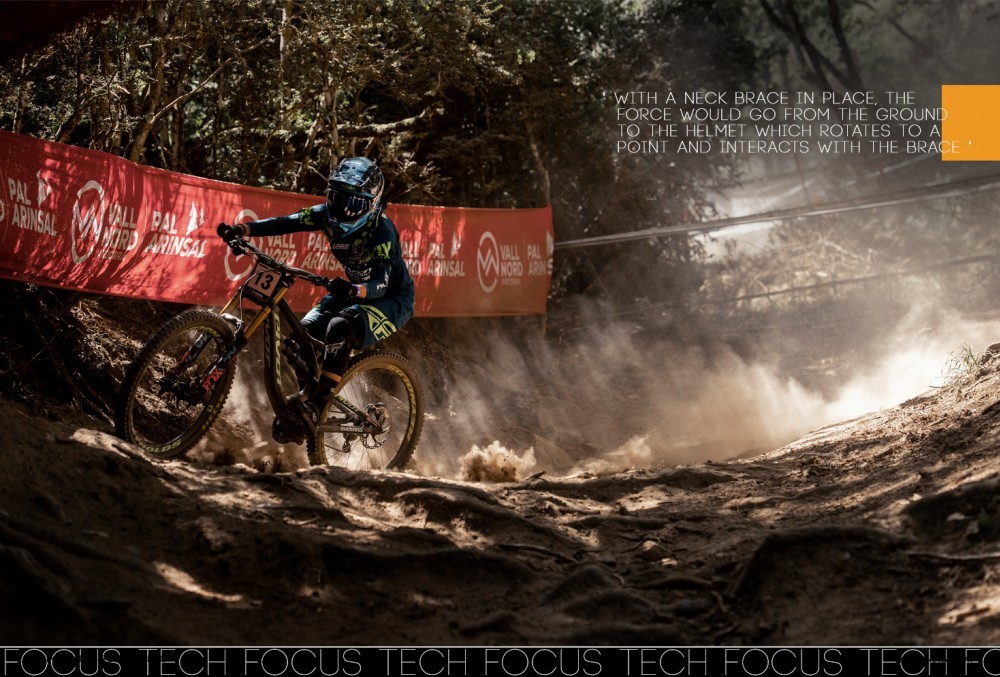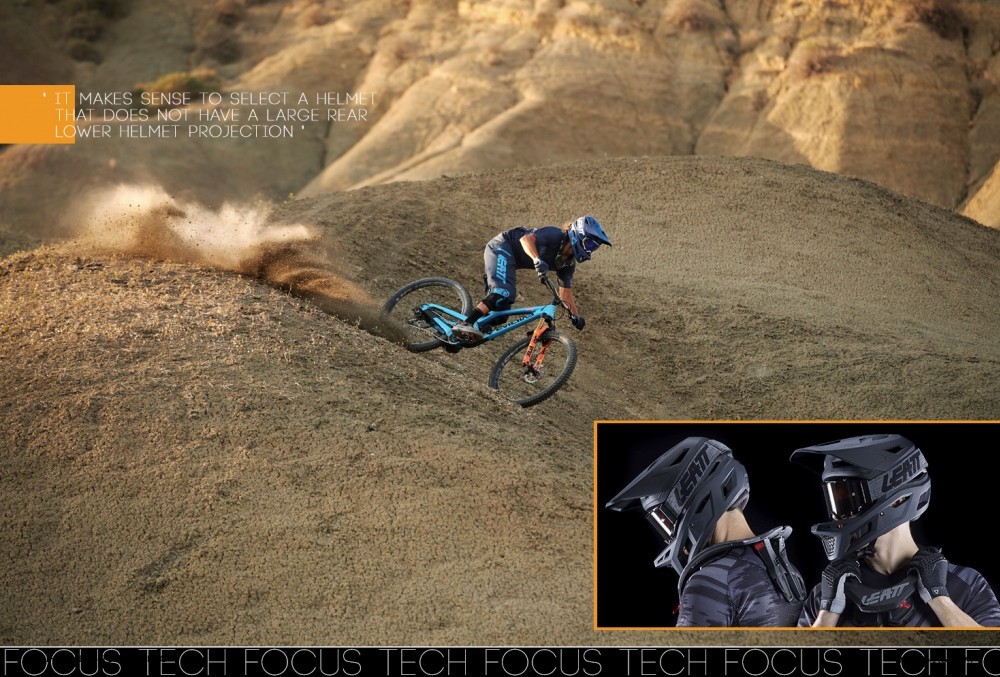
Tech Focus - Leatt Neck Braces
Issue 60 / Fri 16th Aug, 2019
This issue we chat to Dr Chris Leatt, the man behind the neck brace to get the low down on the development of this iconic piece of kit.
Leatt and neck braces go hand in hand, having brought the technology to the mountain bike and motorbike world. Dr Leatt is the head of the company and studied medicine at the University of Cape Town and went on to work in neurosurgery before moving on to explore the viability of a neck protection system to be used in helmet-clad spots. Dr Leatt is an active motorcyclist and raced competitively as well as providing medical coverage for events. We asked him some questions to him about his neck brace and how it all came together.
What is a neck brace, and what are the benefits of wearing one?
A neck brace is a rigid device worn around the neck which interacts with the user's helmet or head to reduce catastrophic neck injuries in case of a fall.
Leatt created the first neck brace, but what was the process that led up to the development?
Yes, before the development of the neck brace, only foam collars existed. These were not considered in the initial design process for two reasons – so as not to influence the ideal and most efficient neck brace design, as well as the fact that when your head extends over the collar in an accident, they can increase neck forces where the collar acts as a fulcrum. The HANS device was used in automobile motorsports before the invention of the Leatt-Brace®. However, this device works in neck tension (elongation) during an accident, not compression as is the case in two-wheeled sports. The process of development included a review of neck injuries, the accidents that cause them and the major forces at play during a fall onto your head. Next, the thesis of a rigid load transfer device – alternative load path technology (ALPT) was developed. This required the neck brace to interact with the underside of the helmet and sit on the body in such a way as to be in the right place at the right time and only fail if the loading dynamics were of a magnitude that would cause damage to the body structures the neck brace was resting on, whilst still removing a component of the initial load.
What exactly does a brace do in the event of a crash and what injuries do they help to prevent?
The neck brace acts as an ALPT (Alternative Load Path Technology ) device to transfer load otherwise directed to the neck to other body structures. In a fall without a brace, the force in a fall (caused in part by the weight of the torso) would be transferred from the ground to helmet, then to the neck via the skull base. With a neck brace in place, the force would go from the ground to the helmet which rotates to a point and interacts with the brace. Part of the energy is thereby directed to the brace, and not all the force goes via the skull base to the neck. In so doing, the force transmission through the neck is reduced, and the threshold required to produce a neck injury is not reached, reducing catastrophic injuries. Injuries protected against are flexion/extension and coupled axial loading injuries. In addition, brain forces are reduced – by limiting post-impact head whip and so are collarbone injuries by shielding the clavicle from helmet rim strikes.
Is it just downhill riders that should be wearing them or do they have applications outside of downhill?
Any helmeted sports or occupations where a fall on the head can result in a neck injury can benefit.
Do they have to work with a specific helmet?
Generally, the Leatt-Brace® works with all helmet types. Whether the head is stopped by the helmet rim or the chin. The sizing, fitment and adjustment are crucial to get right – just like the sizing of a helmet. When looking at a helmet/brace combination, it makes sense to select a helmet that does not have a large rear lower helmet projection, as was a design trend a few years back.
Do they limit the movement of a rider's head, and how would that affect how you ride a bike?
When a neck brace is sized and fitted correctly, limitation in normal head movement while riding is not an issue. If anyone experiences this, it would be a good idea to ask a LEATT agent or reseller to assist you in proper fitment and set up.
Leatt does lots of research into injuries, does the data support the use of neck braces in mountain biking?
It does indeed – a bit of a no-brainer really, both in lab testing and clinical data.
- White paper conclusions
- Reduction in cervical spine bending moments, axial and shear forces through energy transfer (alternate load-path theory), and physical reduction in the range of motion.
- Reduction in thoracic spine bending moments in extension through the use of an energy conductive (through absorption) strut that fractures at a predetermined load.
- Reduction in brain injury-associated dynamics through the correct interaction between deceleration and the time-related control of head impacts.
- No increased likelihood of clavicle fractures, due to its design of a clavicle relief area and the soft padding covering the device.
Thanks to Dr Leatt and Leatt
Videos
By Ewen Turner
Ewen Turner is a self-confessed bike geek from Kendal in the Lake District of England. He runs a coaching and guiding business up there and has a plethora of knowledge about bikes with an analytical approach to testing. His passion for bicycles is infectious, and he’s a ripper on the trails who prefers to fit his working life around his time on the bike.









